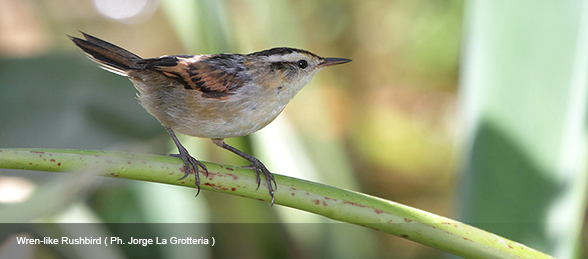Urban Reserves
Where to go birding in Buenos Aires city? GO TOP
There are three main places for birdwatching in the area of B.A. city: Costanera Sur, Ribera Norte and Vicente López Ecologic Reserves. The three of them have different characteristics, with different sizes and bird fauna. There is a fourth place that was very recently declared a natural reserve, called Costanera Norte Ecologic Reserve. All of them are very accessible from downtown taking a cab or public transportation (both bus and train) and the entry is free. Besides the reserves, some of Buenos Aires parks are good for birding too, standing Palermo’s Park, a special place for urban parakeets and waterbirds in its ponds.

COSTANERA SUR ECOLOGIC RESERVE
This is one of the best world’s urban reserves, and an incredible example of how nature can recover itself from the destructive actions of mankind. The place where the reserve is now located, is reclaimed land gained to the river (La Plata river) for a building mega-project that was meant to extend the area of Costanera Sur, at the end of the 1970'. Then the project was suspended, and it all started: nature began taking the new substrate for itself, plants and trees began growing in the levees, and birds began using the lagoons and plants of the new place. After a hard struggle between ecologists and the building corporation, in 1986 the area obtained legal protection as a natural reserve.
In recent years, the lagoons (the most representative environment of Costanera Sur) started to get dry and now (2013) they are almost totally dry. The level of water in the lagoons depends very much on the amount of rains during the years, and usually after a period of rainy days the lagoons get filled again. Marsh vegetation is abundant where the lagoons were located, and in the sides of the levees grows a more diverse flora, with trees and others.
Regarding birdwatching, Costanera Sur is amazing. On its approximately 350 hectares, more than 300 species of birds were seen (although many of them were occasional). When the lagoons are filled, there are many species of aquatic birds, with dozens of ducks, mallards, swans, coots and gallinules. Also, from spring to autumn it is possible to find some of the aquatic migrants that stop here to rest and feed: plovers, sandpipers, yellowlegs and phalaropes. In the increasingly abundant vegetation there are a lot of interesting species of passerines and non passerines to watch. In different seasons there are different species: the most diverse season is the summer (including spring and the beginning of autumn) because of the migrants that come here to look for food and (some of them) breed. In winter they migrate back to the north, but there are other migrants that come from the south of Argentina (Patagonia) to spend the coldest months here, in a more temperate weather.
In other words, a visit to Costanera Sur is always recommended, no matter the season. The amount of species possible to be watched in one day (or half day) depends on the weather, the level of water in the lagoons and, of course, the ability of the watcher and its familiarity with the species of the area and their voices, but you should expect at least 40 species in a regular morning, and many more in a good one. Years ago, with plenty of water birds in the lagoons, it was not unusual to watch over 100 species in a full day.
Specialties
With water in the lagoons: Rufescent Tiger-heron, White-faced Whistling-duck, Coscoroba Swan, Black-necked Swan, Ringed Teal, Wattled Jacana, Scarlet-headed Blackbird and others.
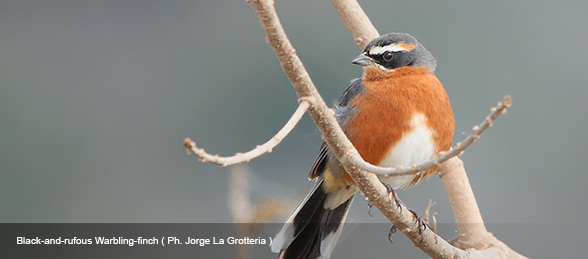
Non aquatic birds: Gray-necked Wood-rail, Black-hooded Parakeet, Guira Cuckoo, Scissor-tailed Nightjar, Checkered Woodpecker, Sooty-fronted Spinetail, Freckle-breasted Thornbird, Spectacled Tyrant, Masked Gnatcatcher, Blue-and-yellow Tanager, White-lined Tanager, Black-and-rufous Warbling-finch, Red-crested Cardinal, Golden-billed Saltator, Solitary black Cacique and more.
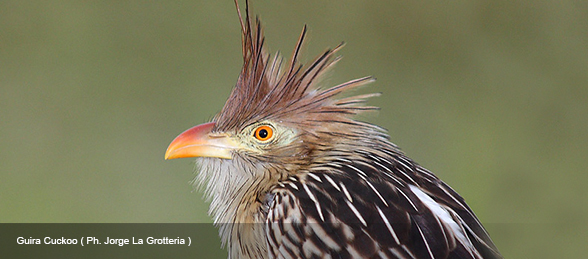
Summer visitors: some of the most remarkable and common summer visitors (migrants) in Costanera are Vermilion Flycatcher, Streaked Flycatcher, Tropical Kingbird, Fork-tailed Flycatcher, Gray-breasted Martin and Double-collared Seedeater.
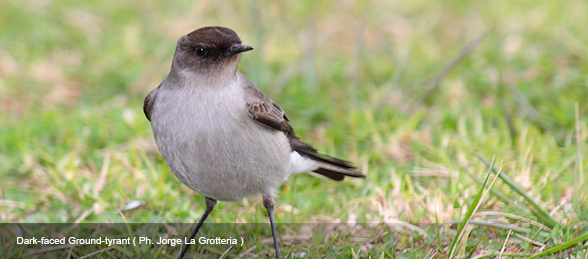
Winter visitors: some of the species that arrive from Patagonia in winter are Bar-winged Cinclodes, Dark-faced Ground-tyrant, Rufous-backed Negrito, Straneck’s Tyrannulet (this one coming from west Argentina, not Patagonia), White-tipped Plantcutter and White-banded Mockingbird.

RIBERA NORTE & VICENTE LÓPEZ ECOLOGIC RESERVES
Ribera Norte Ecologic Reserve lays in the municipality (County) of San Isidro, in the North of Gran Buenos Aires area. Its features are different to the ones of Costanera Sur. It is much smaller but has a very high diversity of flora and fauna. Located in a natural shore of La Plata river, its vegetation corresponds to the riverside forest and the marshes and lagoons ecosystems. It has a small lagoon always filled of water because it is connected to the river, and during the "sudestadas" (strong storms with wind coming from the south-east, very common during the winter) the level of the river rises flooding part of the area.
Vicente López Ecologic Reserve is the smallest of all these urban reserves. As its name suggests, it is located in the municipality of Vicente López (between Buenos Aires city and San Isidro, in the north of Gran Buenos Aires). Something remarkable about this reserve is that it shows very well the native vegetation of La Plata river shore (riverside forest and lagoons), although it was all planted to restore the original ecosystems. Because of the small size of this place, the amount of species is not as large as in Costanera Sur but it’s still a very good place for birdwatching, since it shares many species with Rivera Norte and its lagoon always has water too (this makes it a good spot for aquatic birds).
Specialties
The list of species is shorter than the one of Costanera Sur, but extremely rich considering the small size of the area, with some specialties that are much more common here than in the Costanera.
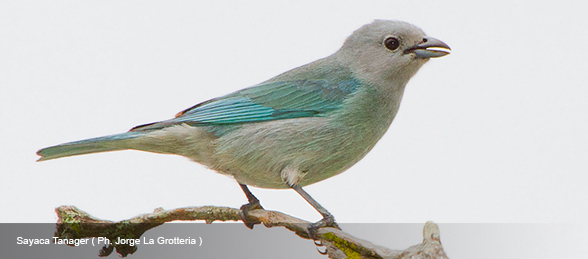
Resident species: many aquatic species are resident here, being some of the most remarkable the Brazilian Duck, Plumbeous Rail, Rufous-sided Crake, Common Gallinule and the Sooty Tyrannulet, (although this one is not aquatic, it lives always near the water). Among the non aquatic birds there is the White-tipped Dove, Gilded Hummingbird, Spix’s Spinetail, Mottled-cheeked Tyrannulet, Rufous-browed Peppershrike, Sayaca Tanager, Yellow-billed Cardinal, Gray-throated Warbling-finch and the Grayish Saltator, among many others.
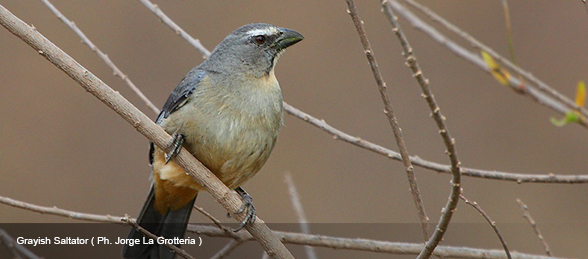
Summer visitors: Bran-colored Flycatcher, Small-billed Elaenia, Swainson’s Flycatcher and Red-eye Vireo, among others.
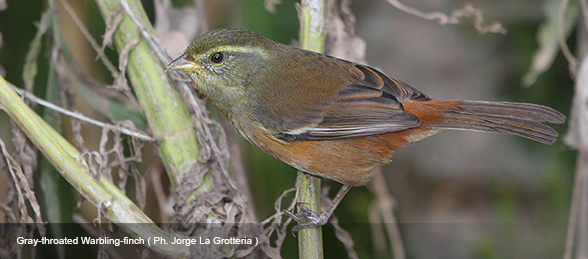
Winter visitors: White-throated Hummingbird, Straneck’s Tyrannulet, White-tipped Plantcutter and more.

COSTANERA NORTE ECOLOGIC RESERVE
This place currently offers a good opportunity for watching aquatic birds in BA, because of the lack of water in the other reserve of the city (Costanera Sur). It is also known by the name name of "Ciudad Universitaria" because of the place where it's located (in the main campus of the University of Buenos Aires). It is a very small place but in a few hours it is possible to see lots of species, including some scarce aquatic birds and others (raptors and passerines). As in the other urban reserves, here the birds are used to human presence and are, in general, very tame.
Specialties
As suggested before, aquatic birds are the main specialties of this small place. It's a good place for herons, with the Cocoi Heron and the Rufescent Tiger-heron as the most remarkable ones. Other aquatic species include Brazilian Duck, Limpkin, Wattled Jacana, Common Gallinule, Ringed Kingfisher and some passerines such as the Wren-like Rushbird, Warbling Doradito, and the beautiful Many-colored Rush-tyrant. Non aquatic birds include some interesting raptors, such as the Harris's Hawk, a breeding resident in the area, and more passerines such as the Southern Beardless-tyrannulet, and the Sharp-billed Canastero, a winter visitor from the south.
